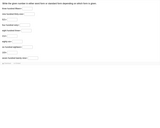
Students will write the given number in either word form or standard form depending on which form is given.
- Subject:
- Education
- Elementary Education
- Material Type:
- Interactive
- Provider:
- Michigan Virtual
- Date Added:
- 12/12/2018

Students will write the given number in either word form or standard form depending on which form is given.

Zaha Hadid grew up in Baghdad, Iraq, and dreamed of designing her own cities. After studying architecture in London, she opened her own studio and started designing buildings. But as a Muslim woman, Hadid faced many obstacles. Determined to succeed, she worked hard for many years, and achieved her goals—and now you can see the buildings Hadid has designed all over the world. The resource includes a lesson plan/book card, a design challenge, and copy of a design thinking journal that provide guidance on using the book to inspire students' curiosity for design thinking. Maker Challenge: Identify an area in your school that is very traditional. Redesign it to better fit the needs of the end-users. Then sketch out a new design, and then create a physical prototype of the new design to scale.
A document is included in the resources folder that lists the complete standards-alignment for this book activity.

This Nrich activity would be a good start to, or could follow on from, work on finding percentages of quantities. In whichever context it is used, it will provide a good assessment opportunity for you to find out what your pupils understand well and what they have difficulties with.
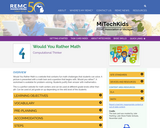
Would You Rather Math is a website that contains fun math challenges that students can solve. A picture is presented with a math task and a question that begins with, Would you rather?”. A worksheet is available for problem-solving. Students justify their answer with mathematics. This is a perfect website for math centers and can be used at different grade levels other than 4th. Can be used at 3rd grade on up depending on the skill level of the students.
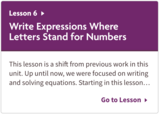
Unit 6: Expressions and Equations
Lesson 6: Write Expressions Where Letters Stand for Numbers
This lesson is a shift from previous work in this unit. Up until now, we were focused on writing and solving equations. Starting in this lesson, we begin to focus on writing expressions to represent situations. Students write expressions that record operations with numbers and with letters standing in for numbers. Students can choose to represent expressions with tape diagrams if they wish (MP5).
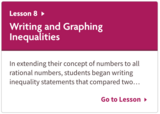
Unit 7: Rational Numbers
Lesson 8: Writing and Graphing Inequalities
In extending their concept of numbers to all rational numbers, students began writing inequality statements that compared two numbers. In this lesson, students extend their work with inequality statements by considering comparisons with an unknown quantity. These quantities, represented by variables, often describe real-world situations, and their value is usually constrained by minimum or maximum allowable values. Students represent these situations with inequality statements and reason about possible values that make them true (MP2). As there are often many, even infinite, possibilities for the value of the variable that satisfy the constraint, students use the number line as a helpful tool to show all the possible values.
The activities in this lesson present students with two types of scenarios. When the variable represents a measurement, the possible values can usually be any number within the range satisfied by the constraint. When the variable represents a count of people or objects, the possible values are restricted to whole numbers within the range. Students also consider whether the constraint itself is included or excluded in the set of possible values, and learn how to indicate this result on the number line representation.
After writing inequality statements to represent situations, students test values to see if they make the statement true.
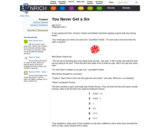
This Nrich problem challenges learners to interpret data carefully and to search for all the information that there is implicit in any graphical representation. The question encourages them to contrast different ways of representing similar data and helps to make explicit their interpretation of what the data represents in order to solve the problem.

Zearn is a math website that is directly connected to the Common Core Standards. Students are given a login and tasks are assigned by the teacher. Tasks are connected to the National Common Core Standards. Throughout the lessons, there are videos that students interact with that help to explain the tasks that they are on. It supports differentiation and engagement for all students. Teachers can access reports on student progress.
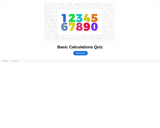
French Speak the Response Basic Math Equations